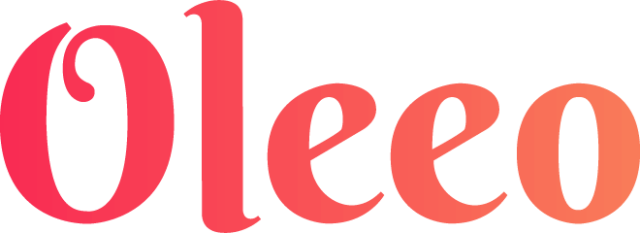11 Diversity Recruiting Strategies to Upgrade Inclusive Hiring in 2025

Diversity recruiting should be a top priority on your HR agenda. A diverse team boosts your bottom line, as varied perspectives foster the innovation driving today’s rapid changes.
By embracing diversity, equity, and inclusion in your hiring practices, your company benefits from creative ideas and effective problem-solving. Diversity of thought leads to better decision-making and higher employee engagement. We all know that passionate, inclusive teams perform at their best.
To help you attract and retain a diverse workforce, we’ll explore 11 proven diversity recruiting strategies you can implement today to experience the full range of benefits. But first, let’s define diversity in recruiting and why it’s crucial.
What is Diversity Recruiting?
Diversity recruiting isn’t about hiring underrepresented groups to tick off boxes. Diversity, equity, and inclusion (DEI) are about diversifying your talent pool so that you hire the most qualified candidates before your competition does.
You could define a lack of diversity in recruitment as any classification of job seekers based on criteria other than their ability to perform. Common biases that exclude otherwise qualified candidates could be gender, ethnicity, sexual orientation, disability, and age.
Diversity and Inclusion in Recruitment (and throughout your business) is about valuing and welcoming everyone in an atmosphere of social and cultural acceptance so that everyone feels like they belong to your team.
What is a Diversity Recruiting Strategy?
A diversity recruitment strategy is your plan for how you’re going to achieve greater diversity in your organization. It should lay out a detailed roadmap of where you are now, where you want to be, and how exactly you’re going to get there.
In order to be truly effective, your DEI recruitment strategy will need to embrace a Data-Driven Recruiting, but that in itself won’t be quite enough. Yes, it absolutely should consider your key Diversity Recruiting Metrics, but it also needs to emphasize the importance of genuine buy-in.
In other words, don’t create success conditions for your recruiting diversity strategy that can be fulfilled just by box-ticking. This can go against the grain in many companies, where evidencing results via numbers and checklists can often be a sign of a job well done.
Unfortunately, that won’t do when it comes to developing a genuinely transformational DEI recruiting strategy.
Instead, there needs to be an element of long-term thinking built in. Investigate options for integrating qualitative research and feedback into your plan. Later, you’ll be able to use this to fine-tune your strategy depending on how well it’s working.
Why is Diversity Recruiting Important?
Diversity in recruitment is vital for businesses, employees, and candidates alike. When you create a diverse, inclusive environment, you encourage an array of ideas, perspectives, and methods. Decision-Making speeds up and improves while meeting times reduce, resulting in Higher Profits.
Research by McKinsey shows that companies who are more diverse and inclusive are 36% more likely to outperform their competitors. While over 76% of job seekers and employees say that a Diverse Workforce is an important factor when evaluating companies and job offers.
Removing any unconscious bias in your Talent Acquisition strategy opens your recruiting process to a broader pool of diverse candidates, increasing your chances of discovering and hiring the top talent.
10 Top Diversity Recruiting Strategies to Increase Workplace Inclusivity in 2025
Increasing diversity in the workplace should be an ongoing priority for forward-thinking companies. Here are 11 ways you can do this:
1. Create more inclusive job adverts
Building a diverse workforce begins with the first step in your hiring process — the job description in your job advert. A well-written description presents the specific skills needed, not a laundry list of hoped-for abilities. Sensitive, thoughtful word choices are crucial.
Use neutral language
The use of gender-coded language is usually unconscious. Gender-based terminology is baked into most languages rendering it easy for human advert writers to miss. Using an AI tool to highlight and suggest replacements for biased terminology attracts more diverse applicants
List only necessary job requirements
Limiting your job requirements to must-haves increases the proportion of women applicants and boosts overall application numbers. Most women feel that they must meet 100% Of The Listed Requirements to have any chance of being hired.
Avoid corporate speak
Not using jargon and business-speak is critical as these can make the best candidates feel like outsiders. Hiring managers need to express terms like “KPIs”, “ROI”, and “game-changer” in ordinary language.
Utilize your employer brand
Candidates often use social media – like LinkedIn – or company review sites – such as GlassDoor – to research a company before applying for a job to get a feel for their culture. It’s beneficial to encourage your current employees to share positive referrals of their daily experience online to showcase your inclusivity.
By improving your corporate brand image, you’ll begin to attract people who align with your values to your candidate pool.
2. Remove bias with blind application screening
When your hiring team evaluates applications manually, it’s challenging to eliminate unconscious bias. Discussed in the Ashkin Group and other publications, women musicians in the five top U.S. orchestras soared from just 5% in the 1960s and 1970s to over 35% by 2016. The orchestras implemented one straightforward hiring design change: blind auditions.
Unconscious bias also exists in the language choices of applicants submitting resumes. Women choose different word sets to describe themselves than men do. These linguistic choices vary according to industry.
Some Diversity Recruiting Platforms can remove all identifiable characteristics from a resume or application, such as name, age, gender, nationality, and more. This enables recruiters to focus on screening individuals solely based on skills and experience.
3. Use diversity benchmarking data
Data-driven recruitment fills your Talent Pipeline with the most qualified candidates from different backgrounds, giving you the workplace diversity needed to produce unbeatable results. Diversity benchmarking data helps you evaluate those results.
Comparing your in-house data with publicly available demographics data can help you uncover hidden biases within your recruitment workforces, optimize for best practice, and improve diversity initiatives.
For example, you may identify that the number of females being hired into supervisor roles for your hospitality business is below the industry standard in your location. This highlights that you need to review and optimize your recruitment processes to improve your female attraction rate. Or you may identify that your retail business is successfully attracting and recruiting more Asian people in management positions in a set location compared to your other settings. This will allow you to roll-out this location’s best practices company-wide to optimize your success.
The US Bureau Of Labor Statistics produces a wealth of free data and tables, as does the US Census Bureau. In the UK, Labour Market Overview Data from the Office for National Statistics provides employment data broken down by industries and individual characteristics.
4. Make the first move to offer accommodations
Diversity in recruitment targets many different groups, but it’s important to remember that some have specific needs.
When reaching out to candidates for an interview, it’s a good idea to ask upfront whether they’ll require any accommodations, such as ramp access to the building or for reading materials to be presented in different formats (large print or Braille). The UK government produces a list of Reasonable Adjustments For The Workplace to give you some idea of the range of accommodations you should consider.
Be sure to time this correctly, though. If you ask the question in the early stages of the recruitment process, it’s likely to put some people off even applying, as they may worry an honest answer could be held against them.
This is a good example of how a focus on increasing diversity in the workplace starts with awareness. And that cuts both ways. A top candidate who needs an accommodation is going to be much more likely to want to work for you if you demonstrate this kind of proactive approach from the get-go.
5. Go where the diverse candidates are
The saying “If you do what you’ve always done, you’ll get what you’ve always got” is often misattributed to Henry Ford. Regardless of who first uttered it, the core of this little adage is relevant here. If you find you’re simply not attracting enough applications from diverse candidates, maybe you’re looking in the wrong places.
One of the best ways to promote diversity in the workplace is to make sure you’re making yourself visible to as wide a group of people as possible. Try actively seeking out online spaces where diverse candidates congregate.
There’s a variety of job boards targeted at specific groups, which can be terrific for reaching out with your recruitment ads.
Flex Jobs is a great resource for finding LGBTQ+ staff, for example, while Women’s Job List is a superb US-based site for any organization looking to increase female representation. It’s worth spending some time researching what the most popular spaces are in your area for the communities you’re trying to recruit from.
6. Ask your diverse employees for referrals
Of course, one way you can find these spaces is to take advice from your own staff. But that’s not the only way you can get help from your current diverse talent.
When hiring for diversity, don’t forget the power of networking. The high importance of diversity and inclusion recruiting means that you can’t afford to ignore any avenue available to you.
Consider introducing a staff referral scheme focused on diverse hiring. This will be particularly helpful for those situations where you’ve established that a particular group is underrepresented in your workforce, and you want to try to boost numbers from that specific demographic.
Assuming you do have some employees from that group, encouraging them to share your recruitment ads with their connections by offering a referral bonus can yield excellent results.
7. Leverage internships strategically
Use internships to target diverse talent. Partner with schools and community organizations you haven’t worked with before, and offer paid internships with flexible schedules. This approach can attract the right candidates, showcasing your company’s commitment to diversity recruiting and creating future opportunities for them after graduation.
8. Make diversity visible in your interview panels
If you go to great lengths to attract diverse candidates for interview but front an interview panel that’s decidedly not diverse, that’s a problem. It simply doesn’t inspire confidence that your organization is sincerely committed to diversity in hiring.
There are two main issues here. First, as we’ve already noted, Unconscious Bias is a major barrier to successfully recruiting for diversity. One of the most vexing facts about unconscious bias is that, by definition, most people underestimate how susceptible they are to it. It’s possible to believe you’re being objective while you aren’t.
It’s not unusual for a candidate to be passed over because they seem, in some nebulous way, to not be a “good fit” for a company’s culture. The harsh reality is that a lot of unconscious bias can be explained away using the “bad fit” rationale, which is impossible to challenge because it’s impossible to define.
The second point is that candidates from underrepresented groups know this. As soon as they walk into the interview room and are faced with a panel with no diverse representation, it can undermine their confidence and affect their performance. It’s critical, then, to ensure that your interview panels are always as diverse as possible.
9. Increase diversity on shortlists
It’s good practice to make sure to include several diverse candidates on every shortlist, as far as possible. That’s because doing so goes some way toward pushing back against the kind of unconscious bias mentioned before.
It’s also part and parcel of making a commitment to DEI recruiting and being seen to do so. Making it work needs ongoing attention to detail at every stage of the recruitment process.
10. Use dedicated diversity recruitment tools
The question of how to improve diversity in the workplace has been around for a long time. For decades, all kinds of policies have been tried, but progress has been slow. Nevertheless, there are some signs that things are beginning to change more quickly.
According to the Missing Pieces Report 2022, by the Alliance for Board Diversity (ABD) in collaboration with Deloitte, the percentage of Fortune 100 board members from underrepresented groups reached a new high of 45.6% in 2022.
One of the contributing factors to this progress in recent years has been that modern tech is stepping up to the task in new ways. Diversity Recruiting Software offers a solution for creating a truly inclusive hiring process.
These tools track diversity metrics all the way through the recruitment journey using cutting-edge analytics. They also help out with other aspects of hiring.
For example, they can generate carefully worded job ads and descriptions to appeal to as many people as possible. In addition, many feature AI-powered selection bias identification tools, making them a powerful weapon in the fight against unconscious bias.
11. Set realistic goals and don’t give up
Finally, it’s important to remember that achieving greater diversity takes time. And there’s no doubt that it’s more difficult for some companies than others—particularly those with a very low level of diversity to begin with.
If your organization operates in a very male-heavy field, for example, it can take a huge culture shift for Diversity Sourcing initiatives to attract significant numbers of female applicants.
After all, you can only recruit from the pool of people who have the skills and qualifications you’re looking for. If 90% of those people are men, then that’s hardly your fault.
The key point here is to make sure that this isn’t used as an excuse for not trying. Too often, people who work in the context of a monolithic culture can find it difficult to embrace new ways of working.
Managers may think that certain work customs are necessary and immutable, even if they aren’t. This kind of thinking can be difficult to confront, but it’s vital to challenge it if you’re to make any progress.
Even a small amount of diversity where there was none before will benefit your organization, bringing fresh perspectives to the table that can lead to genuine innovation.
So, set realistic goals and pursue them in good faith. You’ll be glad you did.
Refine Your Diversity Recruiting Today and Watch the Benefits Unfold
By implementing these diversity recruiting best practices and combining them with diversity and inclusion initiatives across your organization, you’ll create a positive Company Culture that strengthens your brand. A diverse and inclusive workplace not only boosts employee morale but also enhances your recruiting efforts, driving a positive impact on your bottom line.
Level-up your diversity recruiting now with the best-in-class talent acquisition solutions that Oleeo has to offer. Book a Consultation today.
FAQs About Diversity Recruiting
What is diversity recruitment?
Diversity recruitment is the practice of actively seeking and hiring candidates from diverse backgrounds, including different races, ethnicities, genders, ages, abilities, and experiences. The goal is to create a more inclusive and representative workforce that fosters innovation, creativity, and better decision-making, ultimately driving business success and improving company culture.
What are the two categories of diversity?
The two main categories of diversity are primary diversity and secondary diversity. Primary diversity includes characteristics such as race, gender, age, and ethnicity, which are typically visible and inherent. Secondary diversity encompasses factors like education, socioeconomic status, marital status, and work experience, which are more dynamic and can change over time.
What are the benefits of a diverse workforce?
A diverse workforce brings numerous benefits, including increased creativity, improved problem-solving, and better decision-making. It fosters an environment where different perspectives and ideas can flourish, leading to more innovative solutions. Diversity can improve employee engagement, attract top talent, and improve company performance, all of which drive growth and success for the business.
What are major obstacles to DEI initiatives?
Major obstacles to DEI (Diversity, Equity, and Inclusion) initiatives include unconscious bias, resistance to change, and a lack of leadership support. Insufficient training, inadequate resources, and a lack of clear metrics can hinder progress. Overcoming these challenges requires strong commitment, consistent efforts, and creating an organizational culture that actively embraces diversity and inclusion at every level.
What are diversity recruiting best practices?
Diversity recruiting best practices include creating inclusive job descriptions, reaching out to diverse candidate pools, and implementing blind recruitment to reduce bias. Establishing diverse hiring teams, providing unconscious bias training, and building relationships with diverse organizations can also help attract a more varied talent pool. It’s also important to ensure that your company’s culture is inclusive and that there are clear diversity metrics to track progress and hold the organization accountable.
What is a diversity recruiting plan?
A diversity recruiting plan is a strategic approach that outlines the specific actions and goals to attract, hire, and retain a diverse workforce. It includes setting clear diversity objectives, identifying diverse talent sources, implementing inclusive hiring practices, and ensuring the company culture supports diversity and inclusion. The plan also involves tracking progress and adjusting strategies wherever necessary to meet diversity goals and foster an inclusive environment throughout the recruitment process.
How can organizations measure the effectiveness of their diversity recruiting initiatives?
Businesses can measure the effectiveness of their diversity recruiting initiatives by tracking key metrics such as the diversity of applicant pools, the percentage of diverse candidates hired, and retention rates of diverse employees. It is also a good idea to assess employee satisfaction and engagement through surveys, monitor the impact of diversity on team performance and innovation, and evaluate progress toward diversity goals set in the recruiting plan. Regular audits and employee feedback can also provide valuable insights into the success and areas for improvement in diversity recruiting efforts.



